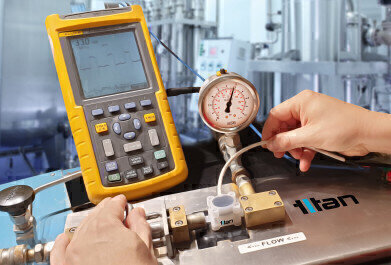-
 Titan Enterprises has published a new technical article focusing on flow meter performance.
Titan Enterprises has published a new technical article focusing on flow meter performance.
Laboratory Products
Optimising Flow Meter Performance: Important Factors to Consider
Aug 24 2021
What are flow meters used for?
Flow meters are used across a wide range of industries as indispensable measuring tools. Commercial applications range from measuring the fuel feeding industrial boilers, for flow monitoring of lubricant supply lines for wind turbines, to dosing chemicals for agricultural sprays. Domestically, flow meters are installed to manage the dispensing of beer or coffee and built into washing machines and dishwashers to meter efficient water usage.
Which factors affect flow measurement device performance?
Turbine flow meters are invaluable measurement tools, and their repeatability and linearity are the key elements that determine the flowmeter’s performance and overall accuracy. Both the mechanical properties of the flow meter and the physical properties of the fluid combine to influence the general performance of the flow measurement device.
A new technical article focusing on flow meter performance is available from Titan Enterprises. This informative article discusses the factors involved in determining the overall performance of pulse output turbine flow meters and how each factor influences the accuracy of flow measurement.
Terms synonymous with calibrating flow meters - the K-Factor, calibration uncertainty, repeatability, accuracy and linearity - are all explained. The technical article discusses the relationship between all these flow factors and how they each influence the overall performance of a flow meter.
Whereas turbine flow meters, such as Titan’s Beverage flow meter and 800 series, offer the high level of repeatability and reliability required for accurate batch delivery systems, Titan’s Atrato® and Metraflow® ultrasonic flow sensors and the larger oval gear flow meters, are highly accurate over wider flow ranges, especially with viscous liquids such as oils.
Neil Hannay, Senior R&D Engineer with Titan Enterprises, explained: “When customers are deciding on appropriate flow meters to suit their application, they need to be aware of the difference between FSD linearity and ‘of reading’ linearity accuracy, as often suppliers do not specify which accuracy is being quoted for.” The technical article from Titan illustrates how the linearity reading has a significant impact on the performance of the flowmeter, particularly at the low end of its flow range.
Read the technical article in full.
More information online
Digital Edition
ILM 49.5 July
July 2024
Chromatography Articles - Understanding PFAS: Analysis and Implications Mass Spectrometry & Spectroscopy Articles - MS detection of Alzheimer’s blood-based biomarkers LIMS - Essent...
View all digital editions
Events
Jul 28 2024 San Diego, CA USA
Jul 30 2024 Jakarta, Indonesia
Jul 31 2024 Chengdu, China
ACS National Meeting - Fall 2024
Aug 18 2024 Denver, CO, USA
Aug 25 2024 Copenhagen, Denmark
-(1)-(1).jpg)


24_06.jpg)













